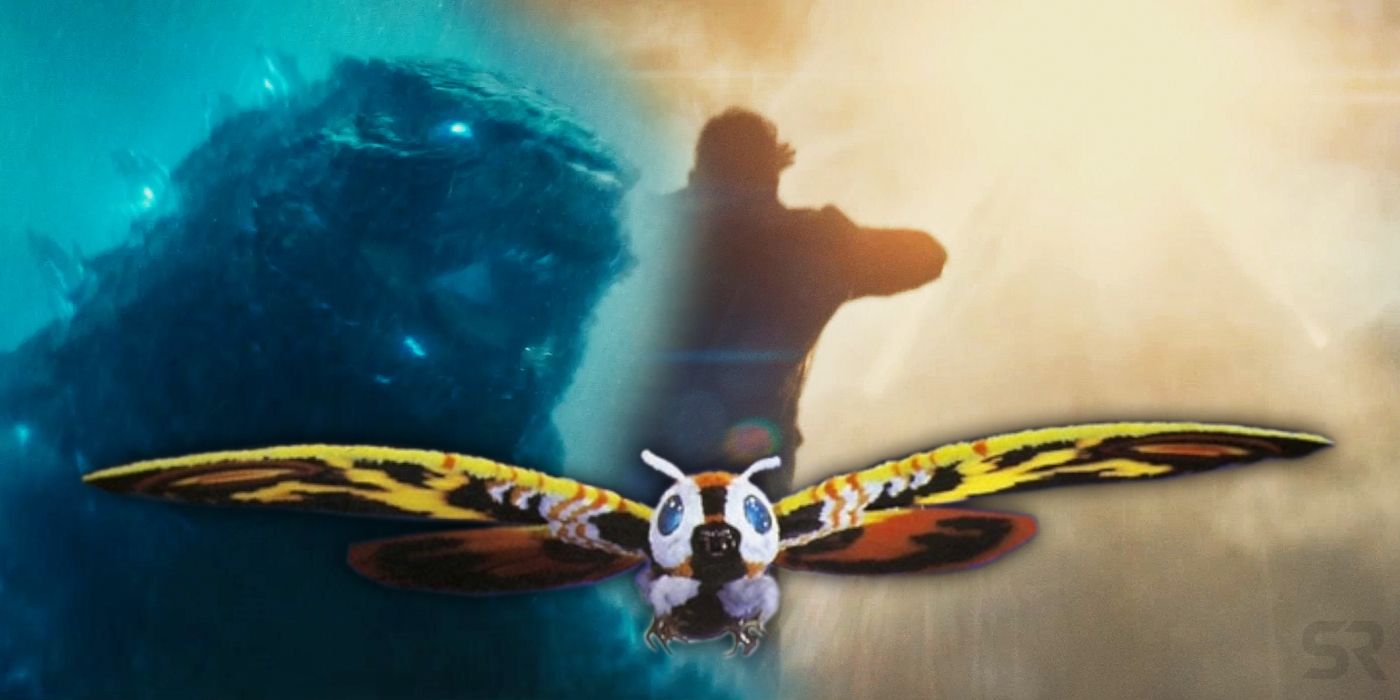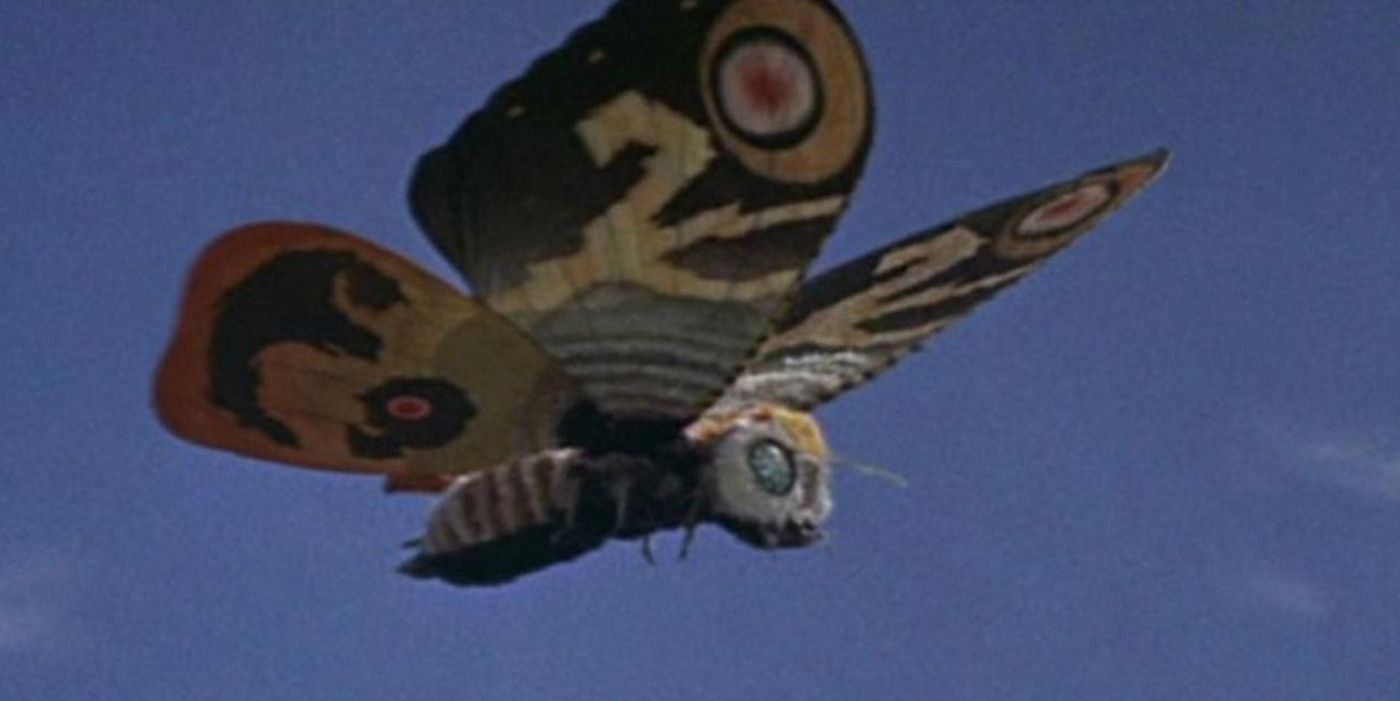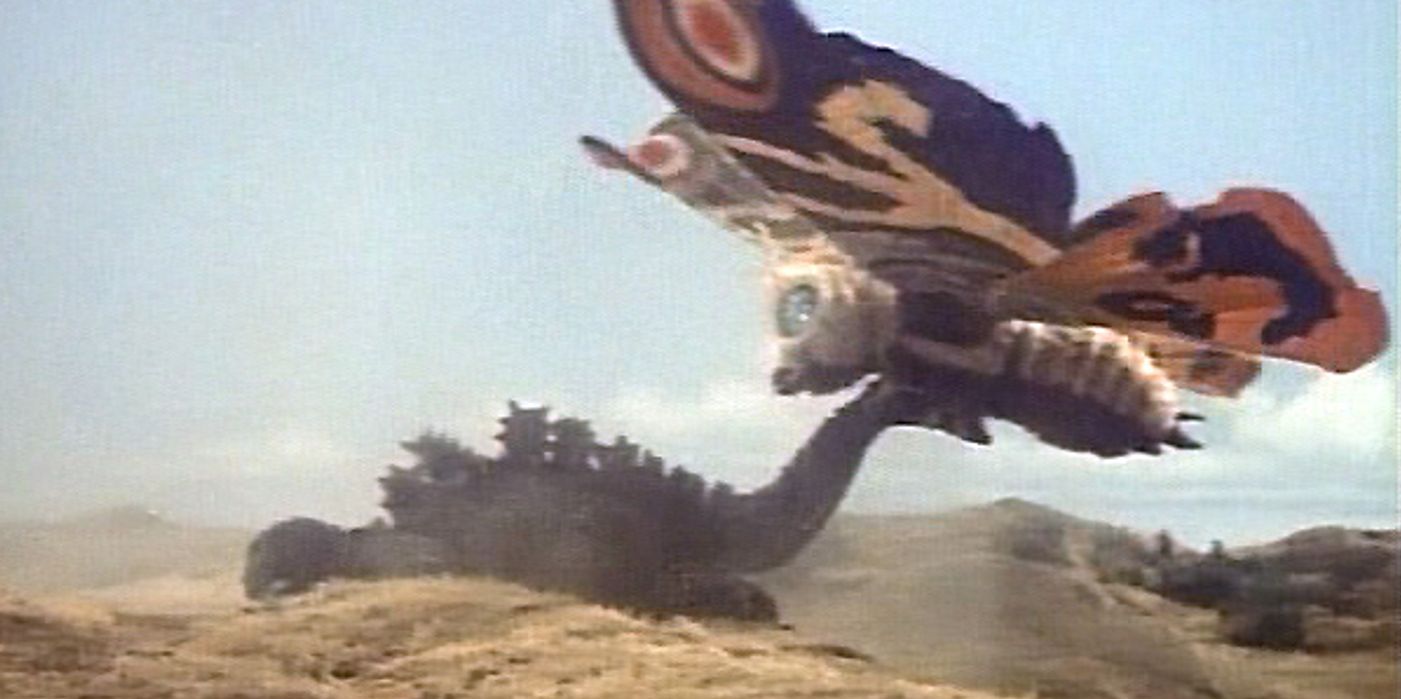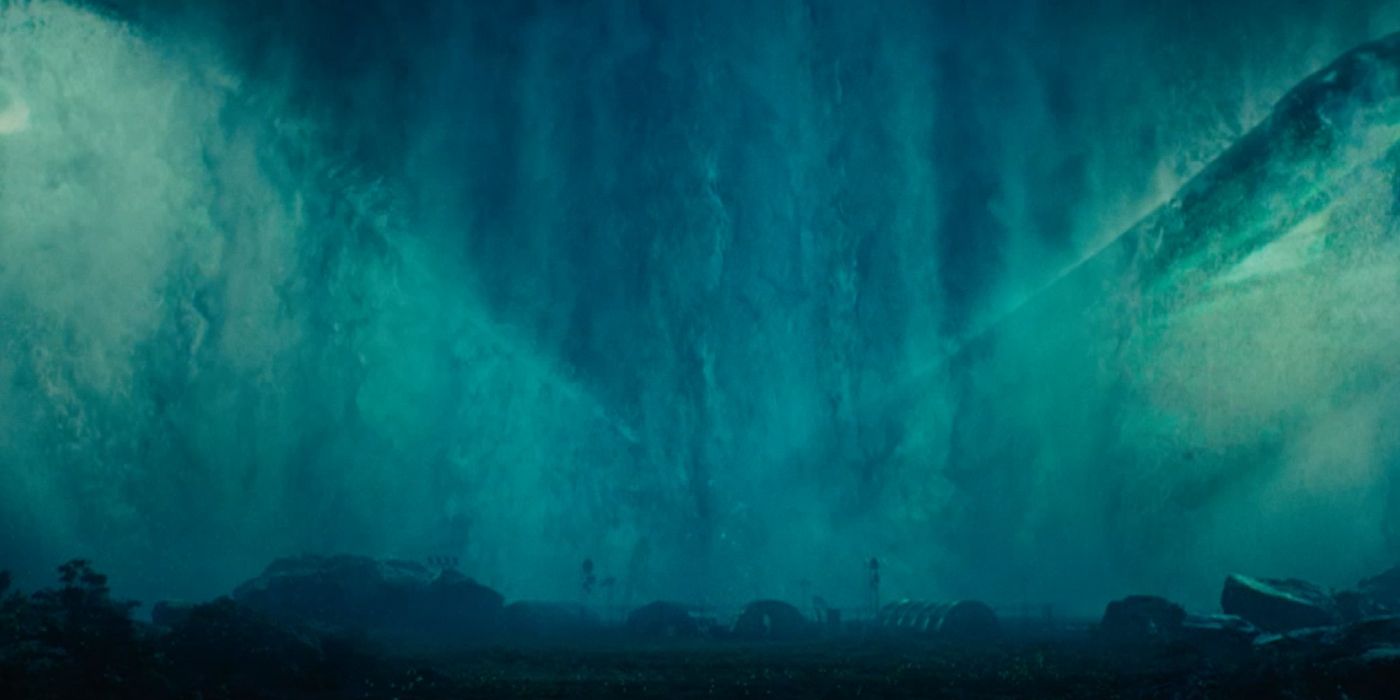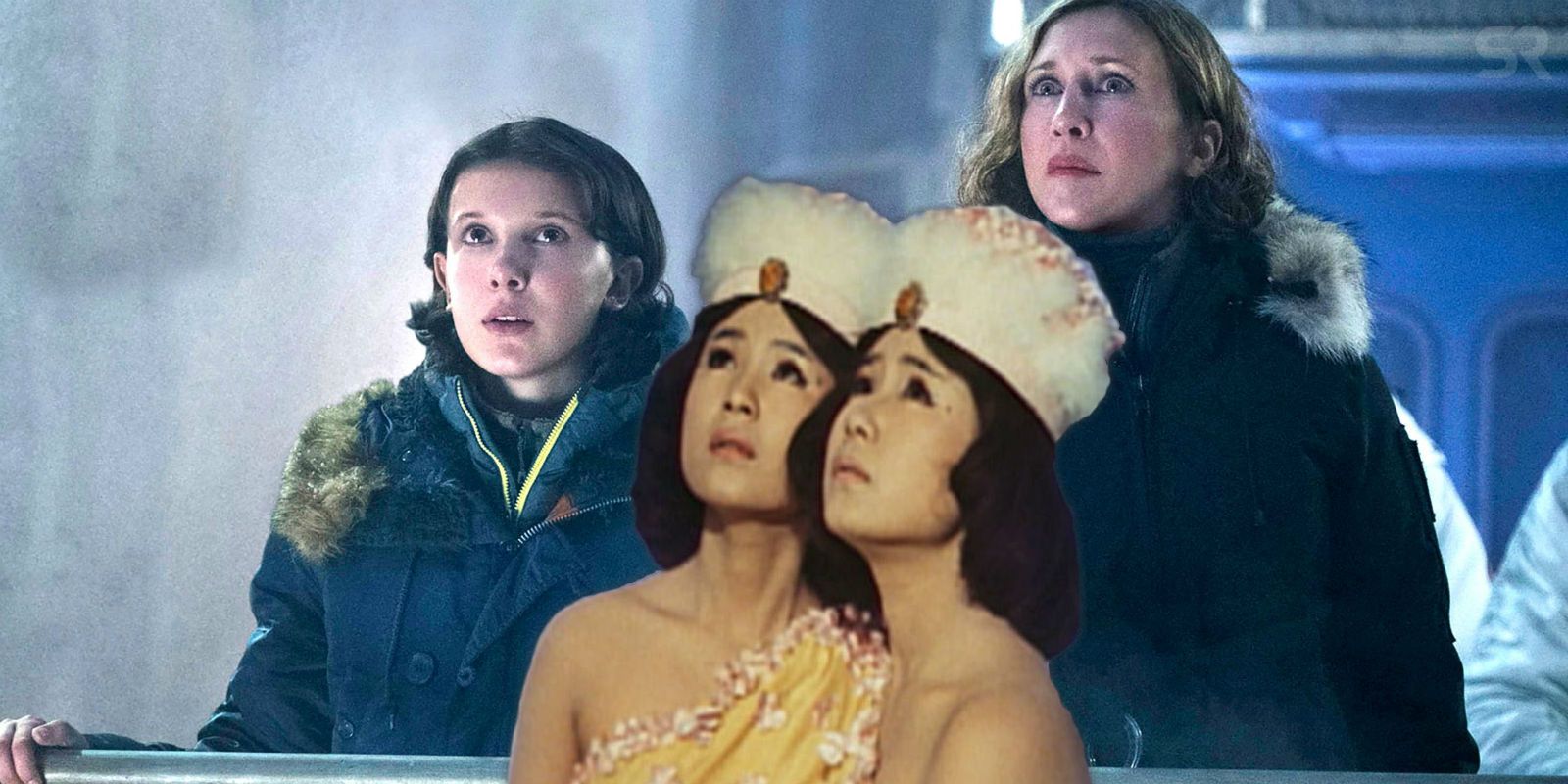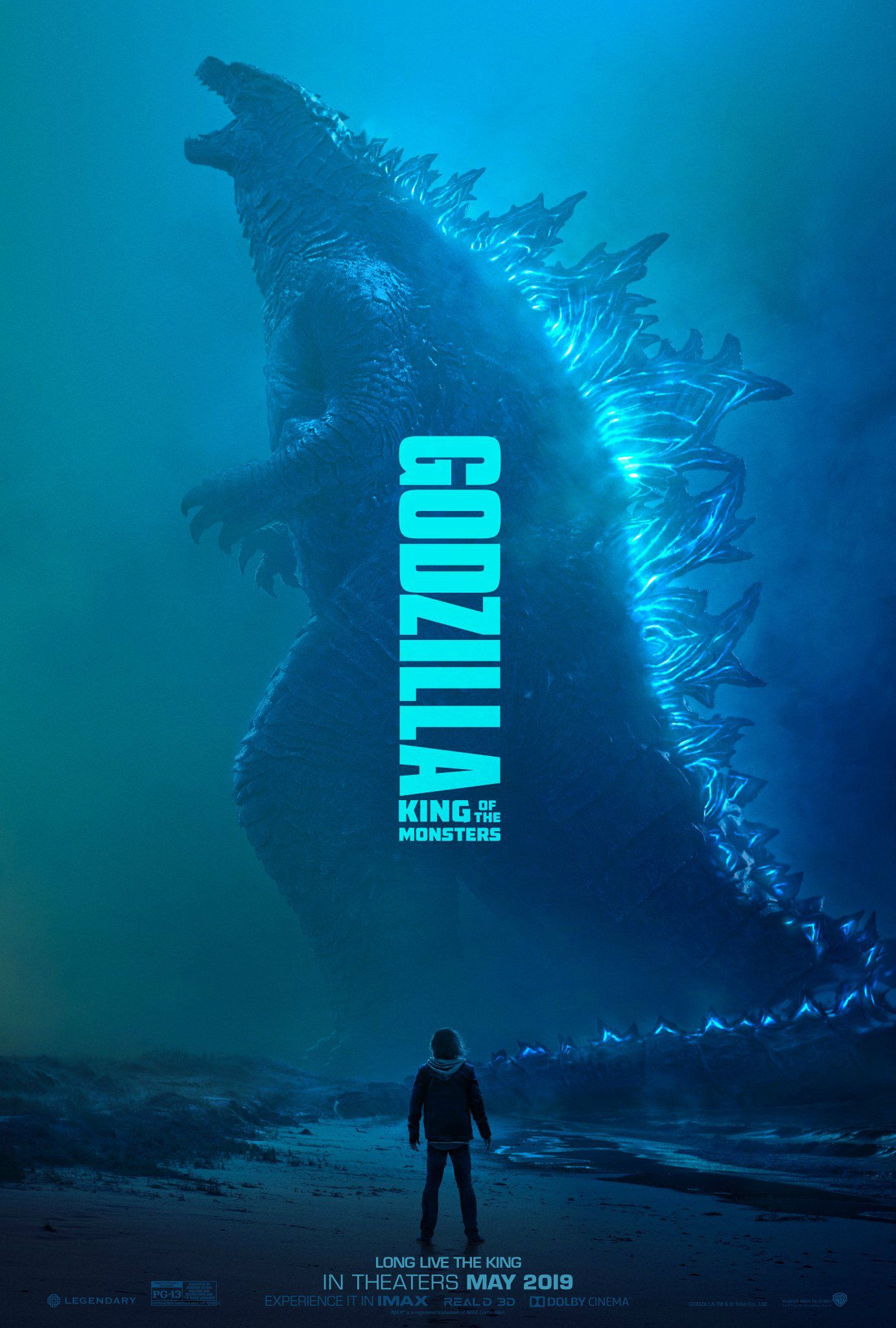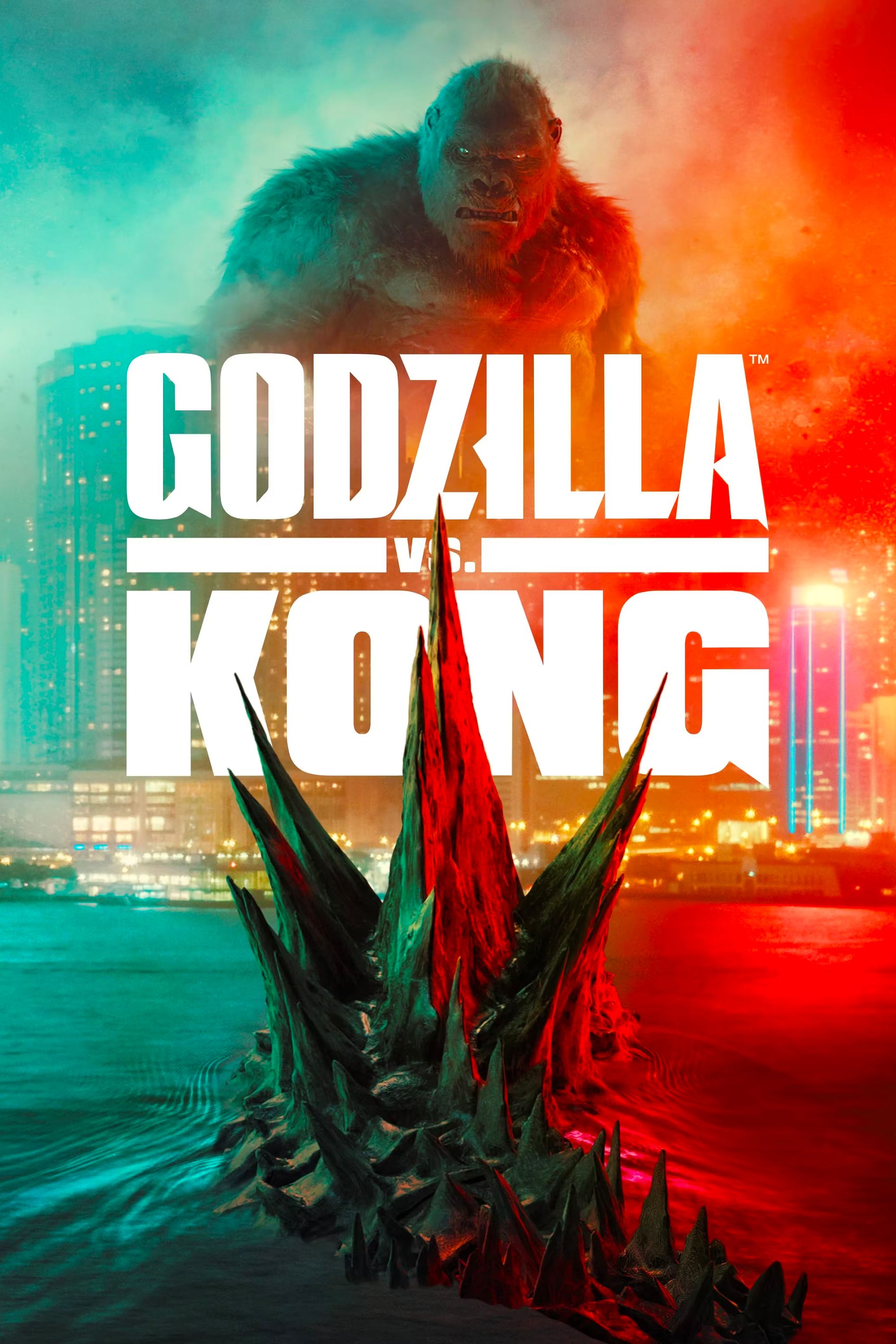In Godzilla: King of the Monsters, the Monster-verse is expanding with three kaiju brethren joining Godzilla and King Kong. Among them is Mothra, one of the more famous of Toho's monsters, and an old friend of Godzilla's. Starring in Warner Bros. and Legendary's blockbuster sequel means a lot of new eyes on the oversized bug, but the creature has been a pillar of the kaiju genre for quite some time.
Indeed, Mothra's history in the realm of giant beasts stomping all over the world is decades old, and a lot of it is tied directly to Godzilla itself. What's more, Mothra is one of the more interesting additions to the overall roster, having a pronounced quasi-supernatural element and being a more direct representation of the wonder of Mother Earth.
RELATED: Godzilla: King of the Monsters - Rodan, Mothra & Ghidorah Explained
Godzilla: King of the Monsters will be a defining chapter in the ethereal creation's existence, being the biggest stage and, likely, audience she's ever had. Here's a look back at Mothra and Godzilla's time together so far.
- This Page: Mothra And Godzilla's Previous Encounters
- Page 2: What Mothra's History Tells Us About King of the Monsters
Mothra And Godzilla's Previous Encounters
Mothra's first big screen appearance came in a movie of the same name in 1961. Directed by Ishiro Honda and written for the screen by Shin'ichi Sekizawa, Mothra is an adaptation of the serialized novel The Luminous Fairies and Mothra by Takehiko Fukanaga, Shinichiro Nakamura, and Yoshie Hotta. Intended as a change from the norm of Toho's monster pictures to date, Mothra is a giant bug instead of a dinosaur or dragon, and she's always been explicitly female.
Her origin is essentially a riff on King Kong; the egg that will hatch the giant moth is worshiped as a god by a population who live on an isolated tropical island (known as Infant Island), and interference from greedy travelers causes the creature to lash out and nearly level a city. But where it differs from King Kong is an explicitly magical element that includes telepathy and two fairy keepers (12” tall creatures that Mothra responds to called the Shobijin), and the overarching backdrop of radiation from nuclear tests that Rodan and Godzilla also already used.
A mainstay of the Showa period of the 1960s, Mothra made several appearances throughout the decade. Her return after her titular outing was 1964's Mothra Vs. Godzilla, wherein the bug is tasked with protecting the city of Nagoya from the rampaging lizard. Here, it's clarified that Mothra can reproduce through laying eggs, and that as the movies go on, there will be new generations of the Monster Goddess. The original Mothra, already dying of old age, is killed by Godzilla's atomic breath, but an egg of hers hatches to spawn a pair of massive larvae who manage to ward off the big G, sending them back into the ocean.
Related: Godzilla 2's Other Monsters Teased By The Monarch Website
That picture preceded Ghidorah, The Three-Headed Monster in December 1964, the central inspiration for Godzilla: King of the Monsters. There, Mothra is the one pure protagonist of the four beasts, trying to get everyone together to stop Ghidorah destroying earth. Godzilla and Rodan are too caught up in their own feud and destruction to care, forcing the larval Mothra to take on Ghidorah herself and lose. The other two, inspired to see a greater good through Mothra's sacrifice, come together and the three see Ghidorah off in magnanimous fashion, the larva riding Rodan's back to plant the multi-headed monstrosity with her webbing ability.
In 1966, a fully-grown Mothra assists Godzilla in battling the deep-sea monster Ebirah in Ebirah, Horror of the Deep, before most of the kaiju roster to date would star in 1968's Destroy All Monsters, one of the defining and final works of the Showa era. A new larval Mothra attacks Beijing as part of the international onslaught the monsters of Monster Island inflict while under the control of the alien race the Kilaaks, eventually helping to take down both Ghidorah and the Kilaaks' Fire Dragon in the climactic battle.
Mothra would remain dormant for over two years before returning in 1992's Godzilla Vs. Mothra. The Heisei period of the mid-eighties through the nineties brought a new canon to Toho's franchise, and Mothra's origin was now as a guardian of an ancient race of people on earth who battle and defeated Battra, the black Mothra. This movie features another Mothra born from an egg and details the cocoon stage on-screen, seeing the larva growing to become the giant, wondrous moth. Joining forces with the back-from-the-dead Battra, the two defeat Godzilla, who had been rebooted to be more villainous.
Read More: It Looks Like Mothra Has Multiple Forms In Godzilla: King of the Monsters
She then got her own trilogy beginning with 1996's Return of Mothra that establishes its own continuity. Here, the hero is known as Mothra Leo, in a story spanning two time periods, modern day and the Cretaceous period. Mothra Leo defeats classic kaiju Desghidorah, newer pollution-based beast Dagahra and, finally, King Ghidorah in a self-sacrificing end to the arc. Mothra features prominently in the Millenium era too, most notably defeating Gigan in the explosive Godzilla: Final Wars, the 2004 blockbuster that celebrated 50 years of the Godzilla franchise.
Page 2 of 2: What Mothra's History Tells Us About Godzilla: King of the Monsters
What To Expect From Mothra In Godzilla: King of the Monsters
Mothra has the potential to be the stand-out gargantuan of Godzilla: King of the Monsters because of how ethereal and different she is. Her being a giant bug makes her distinct to the other three scaly stars of the work and her fantasy-element lends some mystery to the narrative. This iteration of the universe is dark and relatively grounded in that everything has some form of science behind it (even if that science is loose). There won't be any subtitled kaiju conversations here, but telepathy and fairies is pretty necessary to Mothra and working them in might require some suspension of disbelief on behalf of the audience.
The Godzilla 2 trailer has already demonstrated that Mothra will have some magic to her. We see her three major forms: the larva; her wings spreading out after growing inside her cocoon; and emitting blinding light. These shots are the most tranquil of the footage; the glimpse of the larva brings to mind Dr. Alan Grant and the kids in Jurassic Park patting the Brachiosaurus. The wings unfurling is one of the most breath-taking images revealed so far, her mighty appendages stretching to meet the widescreen frame, emanating a calming blue glow, the human base absolutely dwarfed by the majesty. Finally, there's her God-rays, something that made her viewed as otherworldly in the past and shows how she can be useful in a fight. Clearly, Mothra's presence is different – she doesn't bring devastation with her like the other monsters, she's something else.
The plot of Godzilla: King of the Monsters looks to derive heavily from Ghidorah, The Three-Headed Monster, although from all evidence Mothra is probably the arc that changes the most between that film and this. We know she grows during the movie, which already deviates from the 1964 production, and her larval form taking on the three-headed dragon and losing probably won't happen. The Monarch website that teases details about these kaiju, or “Titans,” has the Queen of the Monsters as a creature worshiped by different peoples throughout history, populations developing cults around the massive luminescent bug who had the power to shatter the sky. The company has found her in a crystallized state, with her vitals gradually rising as the events of the movie draw closer and closer.
One theory suggests Vera Famiga's Dr. Emma Russel and Millie Bobby-Brown's Madison Russel will be the “fairies” that can communicate with Mothra. It's a sound prediction that ties the two big stars to a monster and provides a potentially scientific way around this key mythological aspect; we know Madison can control the monsters, and the idea that these two somehow maybe imprint on the titan during the larval sense is a sensible workaround. Depicting the Shobijin as seen in Toho, or described in the novel The Luminous Fairies and Mothra, is dicey territory for an American production for a number of reasons, and this leans into the mother-daughter, Mother Earth, reincarnation ideas that surround Mothra without going into the oriental mysticality.
-
Mothra is something to be excited for in Godzilla: King of the Monsters because she actually has a character beyond "Big Thing That Causes Destruction". There's a lot of interesting narrative potential because she doesn't come from a place of fear or anger – she's about the cyclical, inter-woven power of existence. Going by the little we've seen of her so far, there's a different energy to her than the others, and that's nothing to be afraid of. Unless giant bugs aren't your thing, that is.

